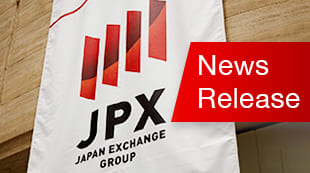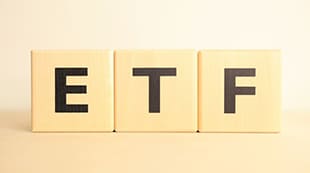Search results 9121-9130 / 10638
- sort:
- relevance
- latest

Disclaimer: This English translation is solely for reference purpose only and not a legally definitive translation of the original Japanese text. In the event adifference arises regarding the meaning herein, the original Japanese version will prevail as the official authoritative version. Changes of Rules in Association with Revision of JSCC's Loss Compensation Framework for Listed Derivatives Clearing Services January 30, 2020 Osaka Exchange, Inc. Ⅰ.Purpose In association with the introduction of an early termination of the issues/quantity of defaulter’s position (i.e. partial tear-up), etc. as measures for solving unsuccessful default auction in JSCC’s loss compensation framework for Listed Derivatives Clearing Services, OSE revises related rules as follows. Ⅱ.Outline Item Outline Remarks 1.Handling of position subject to brokerage for clearing when partial tear-up is activated When partial tear-up is assigned to position subject to brokerage for clearing, non-clearing trading participant ...

Disclaimer: This English translation is for reference purposes only and not a legally definitive translation of the original Japanese text. In the event a difference arises regarding the meaning herein, the original Japanese version will prevail as the official authoritative version Introduction of Market Access Rule, etc. January30, 2020 Osaka Exchange, Inc. I. Purpose The recent automation and acceleration of transactions by market participantshas raised the importance for trading participants to conduct appropriate order management. Given suchbackground, Osaka Exchange, Inc. (OSE)will partially revise the rules concerning order management systems at trading participants from the viewpoint of further improving the stability and reliability of the market. II. Outline Item Contents Remarks 1. Requirement for Direct and Exclusive Risk Management Control over Customer Order Restriction and Measures ・Trading participants must have direct and exclusive risk management control over customer orders with regard to restriction and measures. ・The term "direct and exclusive" ...

1 Order Management Guidelines March 2, 2018 Revised as of January 4, 2021 Tokyo Stock Exchange, Inc. Osaka Exchange, Inc. Japan Exchange Regulation I. Purpose of These Guidelines Tokyo Stock Exchange and Osaka Exchange (hereinafter the "Exchanges") enforced rules concerning order management systems at trading participants in 2006 with the aim of preventing trading participants from accepting or placing orders that contain errors (hereinafter "erroneous orders"), thereby securing confidence in the Exchanges and their trading participants and contributing to the public interest and investor protection. With these rules, the Exchanges have required trading participants to impose limits that prohibit the placement of orders in excess of a certain quantity or monetary amount (hereinafter "one-shot limit(s)")1 and to thoroughly conduct risk management of order placement in accordance with the forms of trading at the trading participant. Trading based on automated order placement by using an electronic data processing ...

Disclaimer: This English translation is solely for reference purpose only and not a legally definitive translation of the original Japanese text. In the event a difference arises regarding the meaning herein, the original Japanese version will prevail as the official authoritative version. 1 Summary of Public Comments on“Introduction of Market Access Rule, etc.”and Exchanges’Responses April 10, 2020 Osaka Exchange, Inc. Osaka Exchange, Inc. and Tokyo Stock Exchange, Inc. (hereafter respectively“OSE”and“TSE”, and collectively“Exchanges”) each published a draft outline “Introduction of Market Access Rule, etc.”on January 30, 2020 and broadly sought comments from the public until February 29, 2020. The Exchanges received many comments and deeply appreciate the cooperation from market participants on deliberations on this issue. The following are a summary of the comments received and responses from the Exchanges. Item Summary of Comments Exchanges’Responses to the Comments 1

Disclaimer: This English translation is for reference purposes only and not a legally definitive translation of the original Japanese text. In the event a difference arises regarding the meaning herein, the original Japanese version will prevail as the official authoritative version Introduction of Market Access Rule, etc. Jan. 30, 2020 Tokyo Stock Exchange, Inc. I. Purpose Tokyo Stock Exchange, Inc. (TSE) has continued to implement various initiatives toward stable market operations. For instance, in response to the arrowhead system glitch that occurred in October 2018, TSE has conducted an overall inspection of the order management systems and data transmission management systems at Low Latency Traders and securities companies that accept orders for Low Latency Trading. Also, since March 2019, TSE has gradually introduced storm control functions to protect its overall network from unexpected traffic storms. Meanwhile, with the advent of automated trading and Low Latency Trading in recent years, it ...

1 Order Management Guidelines March 2, 2018 Revised as of January 4, 2021 Tokyo Stock Exchange, Inc. Osaka Exchange, Inc. Japan Exchange Regulation I. Purpose of These Guidelines Tokyo Stock Exchange and Osaka Exchange (hereinafter the "Exchanges") enforced rules concerning order management systems at trading participants in 2006 with the aim of preventing trading participants from accepting or placing orders that contain errors (hereinafter "erroneous orders"), thereby securing confidence in the Exchanges and their trading participants and contributing to the public interest and investor protection. With these rules, the Exchanges have required trading participants to impose limits that prohibit the placement of orders in excess of a certain quantity or monetary amount (hereinafter "one-shot limit(s)")1 and to thoroughly conduct risk management of order placement in accordance with the forms of trading at the trading participant. Trading based on automated order placement by using an electronic data processing ...

Disclaimer: This English translation is solely for reference purpose only and not a legally definitive translation of the original Japanese text. In the event a difference arises regarding the meaning herein, the original Japanese version will prevail as the official authoritative version. 1 Summary of Public Comments on“Introduction of Market Access Rule, etc.”and Exchanges’Responses April 10, 2020 Tokyo Stock Exchange, Inc. Tokyo Stock Exchange, Inc. and Osaka Exchange, Inc. (hereafter respectively“TSE”and“OSE”, and collectively“Exchanges”) each published a draft outline “Introduction of Market Access Rule, etc.”on January 30, 2020 and broadly sought comments from the public until February 29, 2020. The Exchanges received many comments and deeply appreciate the cooperation from market participants on deliberations on this issue. The following are a summary of the comments received and responses from the Exchanges. Item Summary of Comments Exchanges’Responses to the Comments 1

1 Revisions to Trading Rules in Connection with Launch of J-GATE3.0 May 13, 2020 Osaka Exchange, Inc. I. Purpose Osaka Exchange, Inc. (hereinafter“OSE”) is currently developing the next-generation derivatives trading system (hereinafter“J-GATE3.0”) for launch in the third quarter of fiscal year 2021. This comes as an initiative to build a market platform aligned with changes in the business environment and the needs of market users to realize the pursuit of“the shape of the market”toward the next generation, one of the core strategies of the medium-term management plan of Japan Exchange Group, Inc. OSE aims to further improve the reliability of its systems and to develop the derivatives market in J-GATE3.0 based on the concept of“Launch Timely” to realize the timely addition of products and functionalities and thereby promote the development of long-tail products. As part of ...

2020 Osaka Exchange, Inc. Revision of strike price interval / Changes in Identification Code Specifications The strike price interval for options on JGB futures will be narrowed from JPY0.5 to JPY0.25 for all contract months. ›The range of strike prices (ATM±JPY5.00) will remain the same. This change will go into effect from the day session of the trading day after the J-GATE3.0 go-live date. ›Based on underlying prices at the end of the first trading day of J-GATE3.0, new series (strike prices) will be added from the beginning of the day session the following day. 1 Appx.2 (1) Special transactions (2) Put/call, spot/futures distinction (3) Contract month (4) Exercise price, etc. (5) Underlying indices, etc. □□□□□□□□□ □: Put (1 or 5) Call (2 or 7) □:0-9 (year) □□:01-24 (month) Divide by 0.5; the last two digits ...

1 [Appendix 3] Introduction of Flexible Contract Months for Index Futures Trading M a y 13, 2 0 2 0 Osaka Exchange, Inc. I. Outline of Specifications for Flexible Contract Months for Index Futures Trading Item Details Notes 1. Flexible Contract Months For index futures trading, Trading Participants will be able to apply for a contract month for which the last trading day is a business day of their choosing (hereinafter "Flexible Contract Month"). For Flexible Contract Months, flexible single issue trading will be conducted on the J-NET market, which is a separate market from the auction market. Flexible single issue trading refers to market derivatives trading of one or more contracts with Flexible Contract Months, pursuant to the rules of Osaka Exchange Inc. (hereinafter“OSE”). 2. Contracts Subject to New Rules Flexible Contract Months will be available for Nikkei 225 Futures (Large Contracts), TOPIX Futures (Large Contracts), JPX-...














